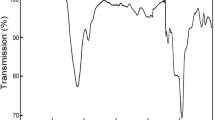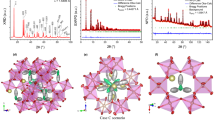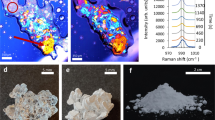Abstract
A LATTICE transition which is not induced by nuclei or boundaries but takes place simultaneously in the whole of a crystal by the jump of a whole lattice plane is termed ‘turn over’ (Umklappen). Such transitions are observed with certain metals (cobalt, thallium) and especially in the austenite–martensite transition. When, in 1941 in this laboratory1, the phenomenon was discovered for the first time with an inorganic salt (potassium dichromate), we were informed by Prof. L. Kofler (Innsbruck) that a similar ‘flashlike’ transition can be observed with suberic acid crystals. The features of this ‘turn over’, as we have observed it, are described here.
This is a preview of subscription content, access via your institution
Access options
Subscribe to this journal
Receive 51 print issues and online access
$199.00 per year
only $3.90 per issue
Buy this article
- Purchase on Springer Link
- Instant access to full article PDF
Prices may be subject to local taxes which are calculated during checkout
Similar content being viewed by others
References
Schwab, G.-M., and Schwab-Agallidis, E., Naturwiss., 29, 134 (1941) see literature there.
Caspari, I. W., J. Chem. Soc., 3235 (1928).
Müller, A., Naturwiss., 20, 282 (1932).
Weygand, C., “Chemische Morphologie der Flüssigkeiten und Kristalle”, “Hand- u. Jahrbuch der chem. Physik”, 2, III, C, 77 (Leipzig, 1941).
Author information
Authors and Affiliations
Rights and permissions
About this article
Cite this article
SCHWAB, GM., DEFFNER, M. The ‘Turn Over’ Transition of Suberic Acid. Nature 167, 240–241 (1951). https://doi.org/10.1038/167240a0
Issue Date:
DOI: https://doi.org/10.1038/167240a0
Comments
By submitting a comment you agree to abide by our Terms and Community Guidelines. If you find something abusive or that does not comply with our terms or guidelines please flag it as inappropriate.



